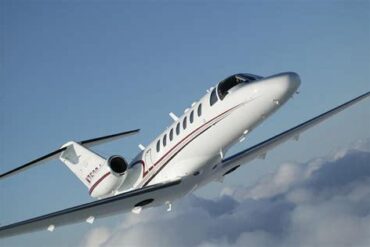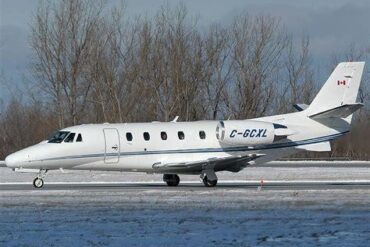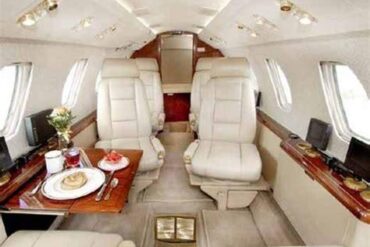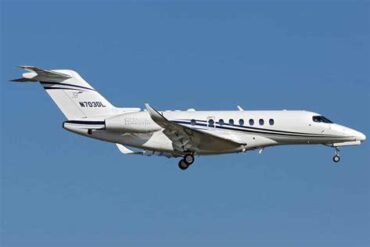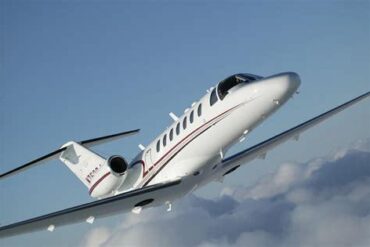The Cessna Citation I, a distinguished member of the Citation family, has been a popular choice among business aviation enthusiasts since its introduction in the 1970s. Its ISP (Improved Shortfield Performance) variant further enhances its capability for short-field operations, making it a versatile option for various flight missions. This article delves into the price, operating costs, and other essential aspects of the Cessna Citation I/ISP to provide potential buyers and operators with a comprehensive overview.
Overview of the Cessna Citation I/ISP
The Cessna Citation I was first launched in 1971 and quickly gained popularity due to its impressive performance and comfort. The ISP variant, introduced later, features enhanced aerodynamics and engine performance, allowing for better takeoff and landing capabilities on shorter runways. With a capacity for up to 6-8 passengers, this aircraft is designed to cater to small groups, offering a blend of luxury and practicality.
Purchase Price of the Cessna Citation I/ISP
When considering the purchase price, the cost of a used Cessna Citation I typically ranges from $1 million to $3 million, depending on various factors such as age, total flight hours, and overall condition of the aircraft.
Factors Influencing Purchase Price
-
Age of the Aircraft: Older models generally have a lower purchase price compared to newer ones. However, they may come with higher maintenance costs.
-
Total Flight Hours: Aircraft with lower total flight hours are often more expensive as they have experienced less wear and tear.
-
Maintenance History: A well-documented maintenance history can significantly influence the resale value. Aircraft that have been consistently maintained and have undergone regular inspections are more desirable.
-
Upgrades and Modifications: Additional features, such as avionics upgrades or interior refurbishments, can also affect the purchase price. Upgraded systems can enhance safety and operational efficiency, adding to the aircraft’s value.
Market Trends
The market for the Cessna Citation I/ISP has shown resilience over the years, with demand remaining steady among business aviation users. Recent trends indicate a growing interest in light jets due to their operational flexibility and cost-effectiveness. As a result, the Cessna Citation I has maintained its position as a viable option for small to medium-sized enterprises looking for efficient air travel solutions.
Operating Costs of the Cessna Citation I/ISP
Understanding the operating costs associated with the Cessna Citation I/ISP is crucial for potential owners and operators. These costs can vary based on flight frequency, operational practices, and local economic factors. On average, the operating costs can be broken down into several categories:
1. Fuel Costs
Fuel is one of the most significant operating expenses for any aircraft. The Cessna Citation I has an average fuel consumption rate of approximately 150 gallons per hour (GPH). With the average price of Jet A fuel hovering around $5 to $7 per gallon, operators can expect to pay between $750 to $1,050 per hour for fuel alone.
2. Maintenance Costs
Maintenance is another critical component of operating costs. Routine inspections, repairs, and parts replacements can accumulate over time. Operators should anticipate average annual maintenance costs ranging from $50,000 to $100,000, depending on usage and adherence to maintenance schedules. Key maintenance aspects include:
-
Scheduled Inspections: Regular inspections as mandated by aviation authorities.
-
Parts Replacement: Costs associated with replacing worn components, which can fluctuate based on the aircraft’s usage.
-
Engine Overhauls: Major engine maintenance can be a considerable expense, typically required every 3,500 to 5,000 flight hours.
3. Insurance Costs
Insurance is a necessary expense for aircraft operators. The cost of insuring a Cessna Citation I can range from $10,000 to $25,000 annually, depending on factors like pilot experience, flight hours, and coverage limits. It is advisable to shop around for insurance providers to find the best rates and coverage options tailored to individual needs.
4. Crew Costs
If the aircraft is operated with a professional crew, personnel costs will add to the overall operating expenses. A typical crew for a Cessna Citation I includes a pilot and possibly a co-pilot. The annual salary for a pilot can range from $60,000 to $120,000, depending on experience and qualifications. Furthermore, training costs for pilots must also be considered.
5. Hangar and Parking Fees
Hangar fees can vary significantly based on location and facility type. On average, monthly hangar fees range from $500 to $2,000, while transient parking fees at airports can incur additional costs. Operators should factor these expenses into their budgeting plans to avoid unexpected financial burdens.
6. Miscellaneous Costs
Other miscellaneous costs may include:
-
Landing Fees: Charges imposed by airports for the use of their facilities.
-
Navigation Fees: Costs associated with air traffic control services and navigation aids.
-
De-icing Costs: If operating in colder climates, operators may need to account for de-icing costs during winter months.
Total Estimated Operating Costs
When combining all the above categories, the estimated total operating costs for a Cessna Citation I/ISP can range from $1,200 to $1,600 per flight hour. These figures can vary significantly based on the specifics of each operation and the frequency of flights.
Resale Value and Depreciation
A critical consideration for prospective buyers is understanding the resale value and depreciation of the Cessna Citation I/ISP. Typically, business jets depreciate at an average rate of 5% to 10% per year, influenced by factors such as market demand, aircraft condition, and technological advancements.
Maximizing Resale Value
To maximize resale value, owners should consider the following strategies:
-
Regular Maintenance: Keeping the aircraft in optimal condition can enhance its appeal to future buyers.
-
Documentation: Maintaining thorough records of all maintenance and modifications can instill confidence in potential buyers.
-
Upgrades: Investing in modern avionics and interior refurbishments can significantly increase the aircraft’s market value.
Conclusion
In summary, the Cessna Citation I/ISP presents an attractive option for individuals and businesses seeking efficient and versatile air travel solutions. While the purchase price may vary, the operating costs are relatively manageable compared to other aircraft in its class. Understanding these financial aspects is crucial for making informed decisions regarding ownership and operation. By carefully considering the costs and potential resale value, operators can ensure they make a sound investment in their aviation needs.







